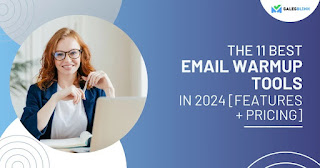How to write an effective follow-up email sequence that draws replies
Writing an effective follow-up email sequence can greatly increase the chances of receiving replies. Here's a step-by-step guide on how to create an impactful follow-up email sequence:
Initial email: Craft a compelling and personalized first email that clearly communicates your value proposition, establishes relevance, and provides a clear call to action. Keep it concise, engaging, and easy to read. Avoid sounding too salesy or generic.
Set a follow-up schedule: Determine the appropriate time intervals for your follow-up emails. Consider factors such as the urgency of the communication, the recipient's industry norms, and your relationship with the recipient. Typically, spacing your follow-up emails a few days apart is a good starting point.
Reminder email: If you don't receive a reply within a reasonable timeframe (e.g., one week), send a gentle reminder email. Politely reference your initial email and reiterate the value you can provide. Use a friendly tone and avoid sounding pushy or demanding.
Add value: In subsequent follow-up emails, offer additional value or insights related to the recipient's industry or pain points. This can be in the form of a relevant article, industry report, or case study. Show that you genuinely want to help them and provide valuable information, even if they haven't responded yet.
Personalize the content: Continuously personalize your follow-up emails based on the recipient's specific needs or interests. Refer to any previous interactions, mention their company or industry, and demonstrate that you have taken the time to understand their challenges or goals. This level of personalization helps build a connection and encourages a response.
Address objections or concerns: If you anticipate common objections or concerns that might prevent a reply, address them proactively in your follow-up sequence. For example, if budget constraints are a common concern, include information on cost-saving benefits or flexible pricing options.
Use a compelling subject line: Pay attention to your subject lines to grab the recipient's attention and encourage them to open your emails. Experiment with different subject lines that create curiosity, offer value or highlight a specific benefit.
Keep it concise and scannable: Remember that busy professionals receive numerous emails daily. Keep your follow-up emails concise, easy to read, and scannable. Use bullet points, subheadings, and formatting techniques to make the content visually appealing and digestible.
Polite persistence: While it's important to follow up, avoid being overly aggressive or impatient. Maintain a polite and respectful tone throughout your email sequence. Acknowledge that the recipient may be busy and assure them that you're available to answer any questions or provide further information at their convenience.
Final follow-up: After a reasonable number of follow-up attempts, conclude your sequence with a final email. Express your gratitude for their time and consideration, and let them know that you won't be contacting them further unless they express interest.
Remember, an effective follow-up email sequence requires a balance between persistence and respect for the recipient's time. By providing value, personalizing the content, and maintaining a professional tone, you increase the likelihood of receiving replies and further engaging with your audience.
Related Reading:
Cold Email Guide To Excel At Outreach
Best Outreach Tools For Sales To Accelerate Conversions
write cold emails instantly using ChatGPT Email Writer


Comments
Post a Comment